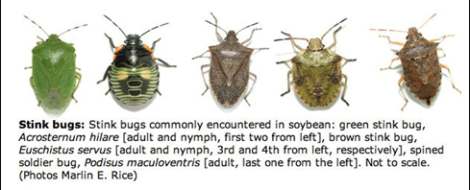Where did it the brown marmorated stink bug come from?
People have a lot of questions about stinkbugs, however, the biggest one is usually, “Where did they come from?”
Until recent years, most people don’t recall dealing with the brown marmorated stink bug, or its scientific name, Halyomorpha halys. That’s because it hasn’t been in North America very long.
There are actually many types of stink bug, but this particular species – military looking, with a shield-shaped body – was only introduced recently to the U.S. It is native to Asia, and experts believe that it made its way into the United States via shipping containers in the mid-1990s.
How the stink bug got its name
The stink bug got its name from a natural defense mechanism to ward off predators such as birds and fish. When it feels threatened, the stink bug will produce a chemical that actually smells and deters predators.
That’s why you should never smash a stink bug – if you do, you’ll release the chemical and probably get a whiff of the odor yourself.

Why stink bugs are a problem
The brown marmorated stink bug is mostly an agricultural pest. This pest likes to feast on a number of fruit and vegetable crops, including apples, corn, peaches, peppers, tomatoes, and soybeans. The damage can’t often be seen through visual inspection, which complicates the problem.
For those of us not working in agriculture and stores that sell these products, stink bugs are mostly a nuisance pest. We spot them when they squeeze into our businesses and homes through vents, other gaps and openings, and the smallest of cracks and crevices, many of which we may not even know are there.
Stink bugs and overwintering
In cooler weather, stink bugs are like many of us, looking for sheltered or protected spaces. They find these spaces in the structures where humans work and live, crawling in through small openings, gaps, and cracks. Sometimes, you may never see them because they hide inside walls, in attics, or crawl spaces which are rarely accessed. This practice is called “overwintering,” so named because the pests spend winter hiding inside.
On those perfect spring days when temperatures are ideal, stink bugs begin to come out of their hiding places. That’s when you might see them crawling around inside your business – they are waking up and looking to make their way outside from their hiding places. They move towards the warmth, which is why some invade buildings.
In the fall, as temperatures drop, stink bugs already outside begin looking for places to overwinter, so they find their way from nearby plants to buildings and structures. They may gather on the sides of buildings – particularly the south and west facing sides that see the most sun. (Fun fact: there are other pests that behave in the same way as stink bugs in this type of behavior – most notably ladybugs, lady beetles, and in the Southeastern U.S., kudzu bugs.)
Occasionally, some properties will experience mass stink bug issues, where large numbers of pests emerge or appear at one time. It can seem like something out of an Alfred Hitchcock film, but the pests will usually disperse or go back into hiding within a few days.
What can you do to stop stink bugs
If stink bugs do get inside, there are few things you can do other than wait it out. Our graph below outlines what you should and shouldn’t do.

The best defense against stink bugs is a good offense: sealing up cracks and crevices where they get in. Your Alternative Earthcare Specialist can help perform an annual inspection to determine where problem areas might be and can also help you with an exclusion plan to keep them out.












